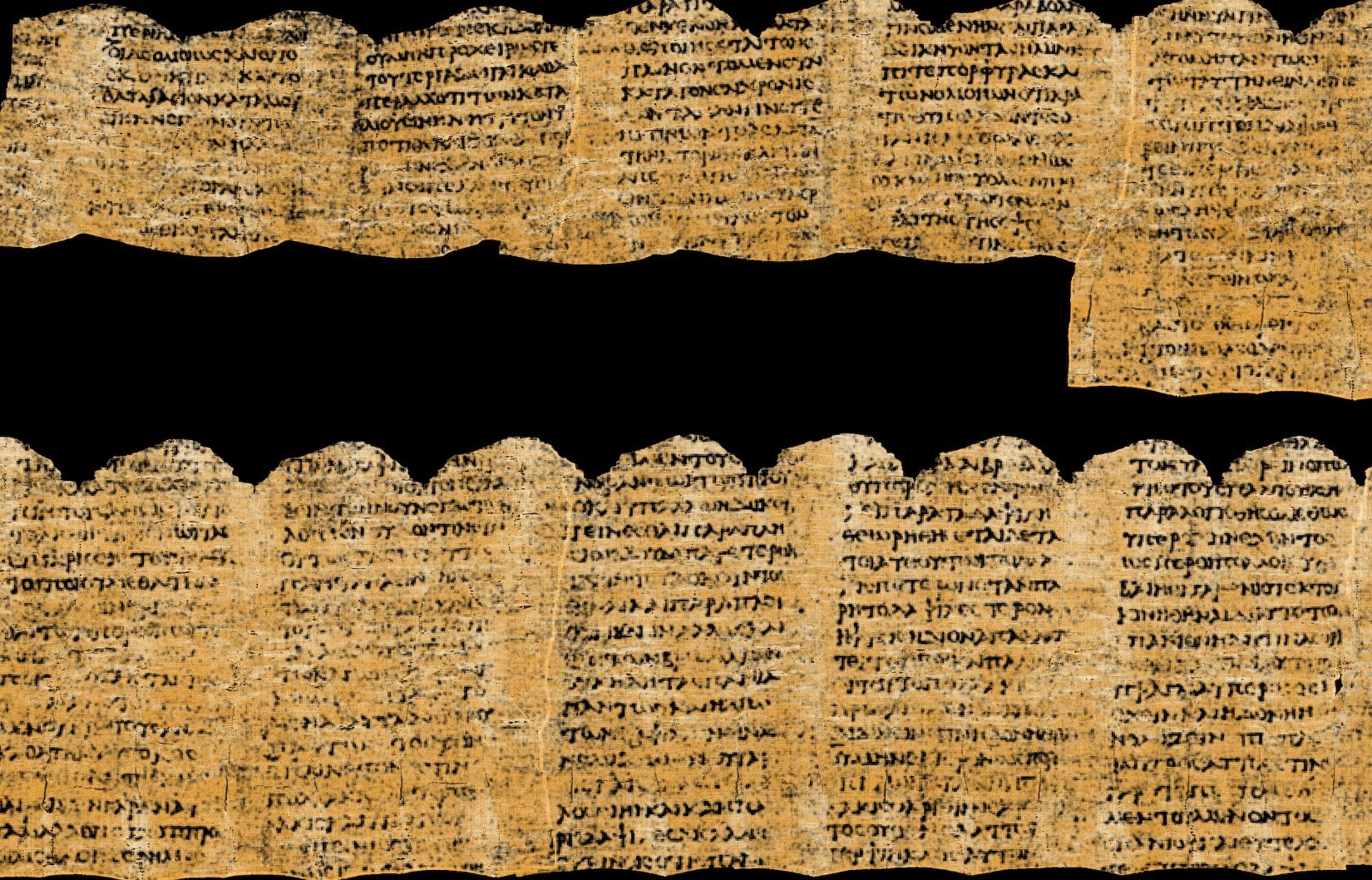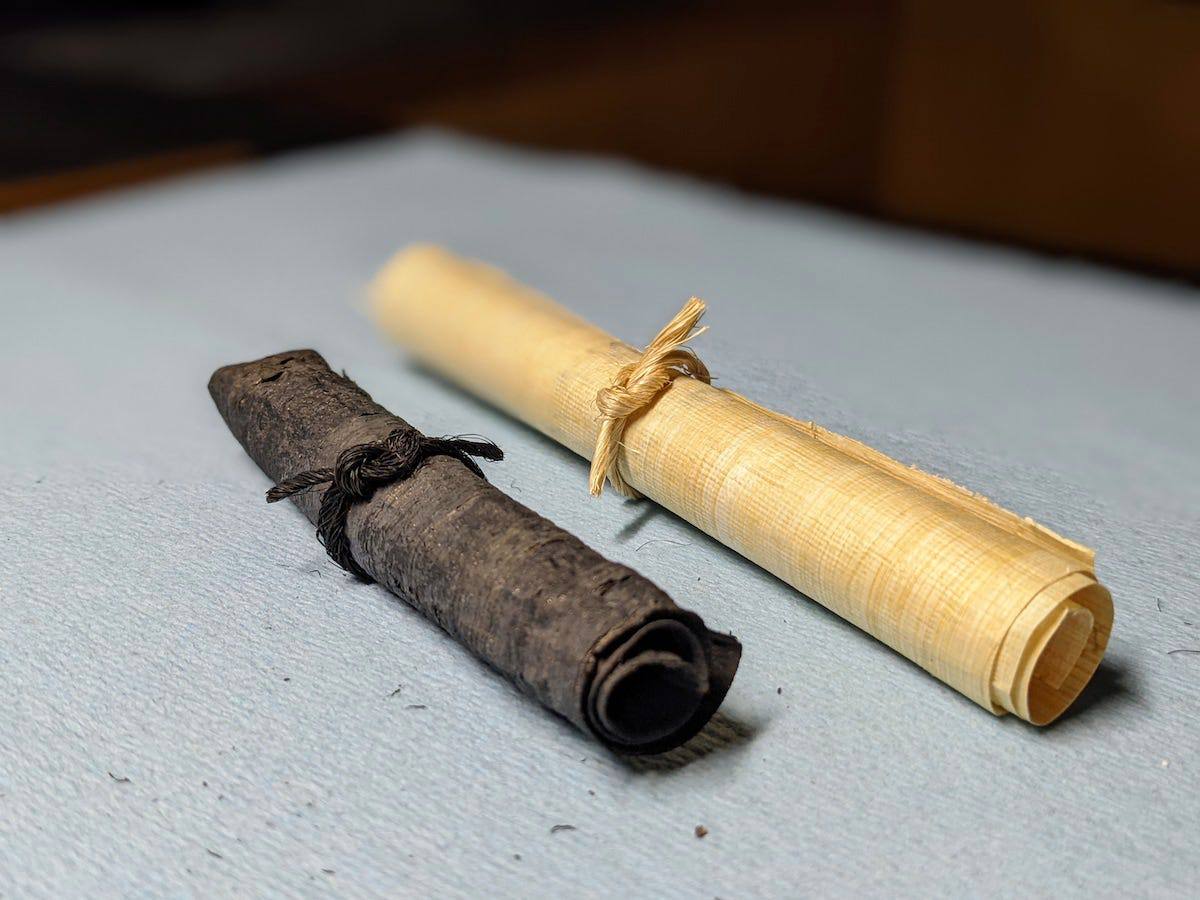
With the help of AI, a team of tech-savvy students has successfully deciphered over 2,000 Greek letters from an ancient scroll in Herculaneum that was damaged during the Vesuvius eruption nearly 2,000 years ago.
Experts see this discovery in ancient studies as a significant step towards a new era of understanding. The scroll was buried during the eruption.
In the library of a Roman villa in Herculaneum (Heraklion in Greek), there were hundreds of papyrus scrolls. However, they turned to ashes when the town faced a powerful blast of heat, ash, and pumice during the destructive event in AD79, which also devastated nearby Pompeii.
During excavations in the 18th century, over 1,000 scrolls, either complete or partially damaged, were found in the mansion. This grand residence was believed to belong to Julius Caesar’s father-in-law. However, the black ink on the charred papyri was unreadable, and attempts to open the scrolls led to them disintegrating into pieces.

Reading more than 2,000 Greek letters from the Herculaneum scroll
A significant advancement in deciphering the ancient content emerged through the Vesuvius Challenge, a competition initiated in 2023 by Brent Seales, a computer scientist at the University of Kentucky, along with support from Silicon Valley.
This $1 million challenge encouraged participants to extract text from high-resolution CT scans of a scroll captured at Diamond, the national synchrotron facility in Oxfordshire, UK.

This Monday, Nat Friedman, a tech executive from the US and a founding supporter of the challenge, revealed that a team of three tech-savvy students – Youssef Nader in Germany, Luke Farritor in the US, and Julian Schilliger in Switzerland – won the top prize of $700,000. They achieved this by successfully deciphering over 2,000 Greek letters from the ancient scroll.
Ten months ago, we launched the Vesuvius Challenge to solve the ancient problem of the Herculaneum Papyri, a library of scrolls that were flash-fried by the eruption of Mount Vesuvius in 79 AD.
Today we are overjoyed to announce that our crazy project has succeeded. After 2000… pic.twitter.com/fihs9ADb48
— Nat Friedman (@natfriedman) February 5, 2024
Papyrologists, experts who study ancient texts on papyrus, were amazed by the accomplishment of deciphering the text from the charred scroll.
Moreover, Robert Fowler, emeritus professor of Greek at Bristol University and chair of the Herculaneum Society, expressed his astonishment by saying that this is a total game-changer. There are hundreds of these scrolls waiting to be read.
Translating the ancient Greek word for “purple”
Scrolls That Survived Vesuvius Divulge Their First Word https://t.co/xfdSQO8dwA pic.twitter.com/AFjaaz2QmY
— Arts Hub Project (@artistshub) October 13, 2023
Back in October 2023, Farritor secured the challenge’s “first letters” prize of $40,000 by identifying the ancient Greek word for “purple” in the scroll, which was “πορφύραc.”
In November, he teamed up with Nader, and shortly before the contest deadline on December 31, Schilliger, who created an algorithm to automatically unwrap CT images, joined the team.
Together, they successfully interpreted over 2,000 letters from the scroll, providing scholars with their initial meaningful glimpse into its contents.
“It’s been an incredibly rewarding journey,” said Youssef. “The adrenaline rush is what kept us going. It was insane. It meant working 20-something hours a day. I didn’t know when one day ended and the next day started.”